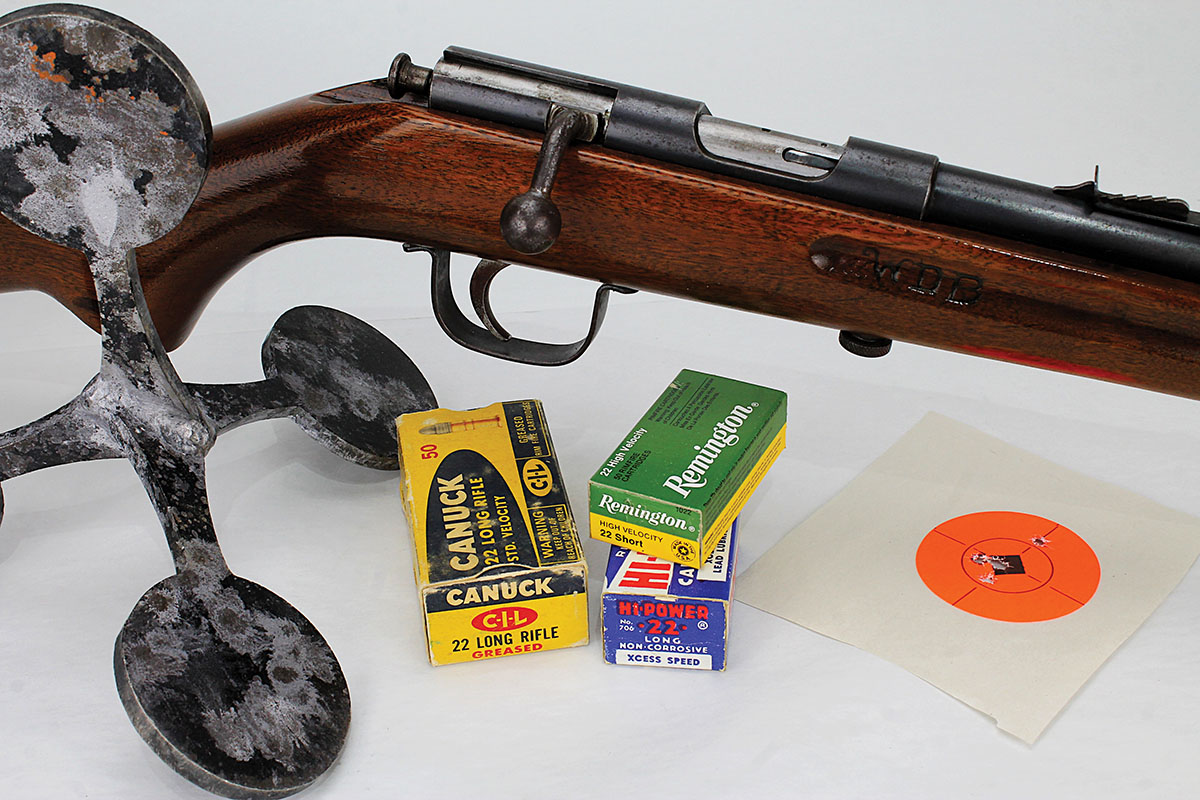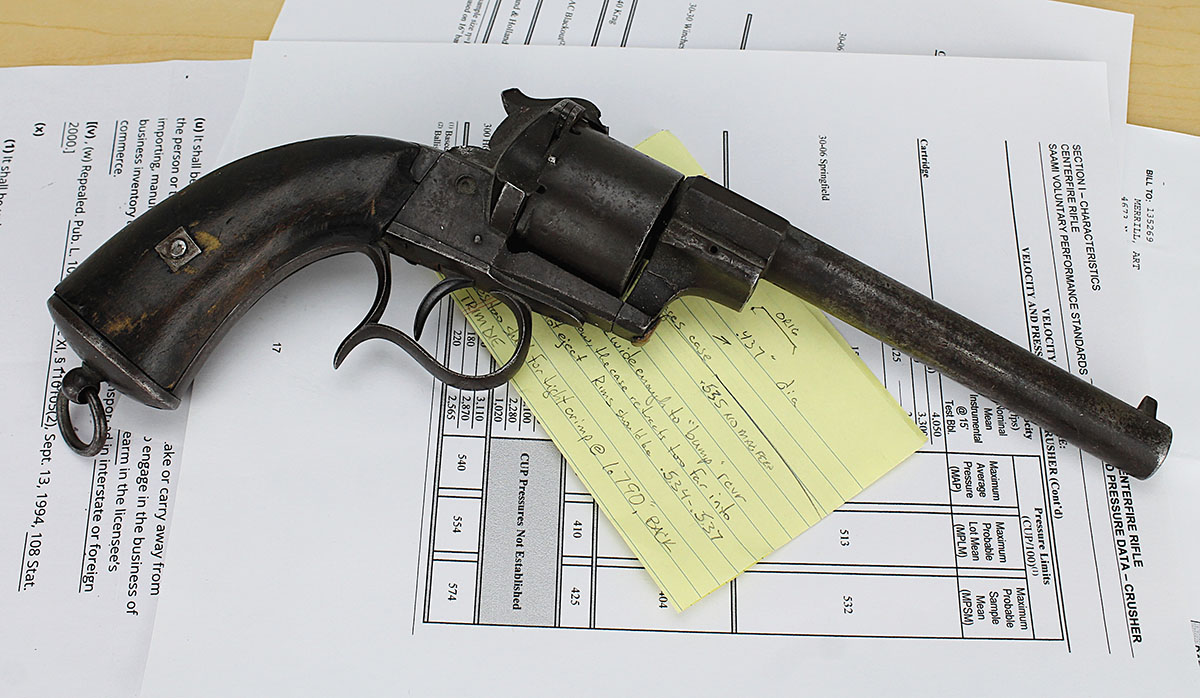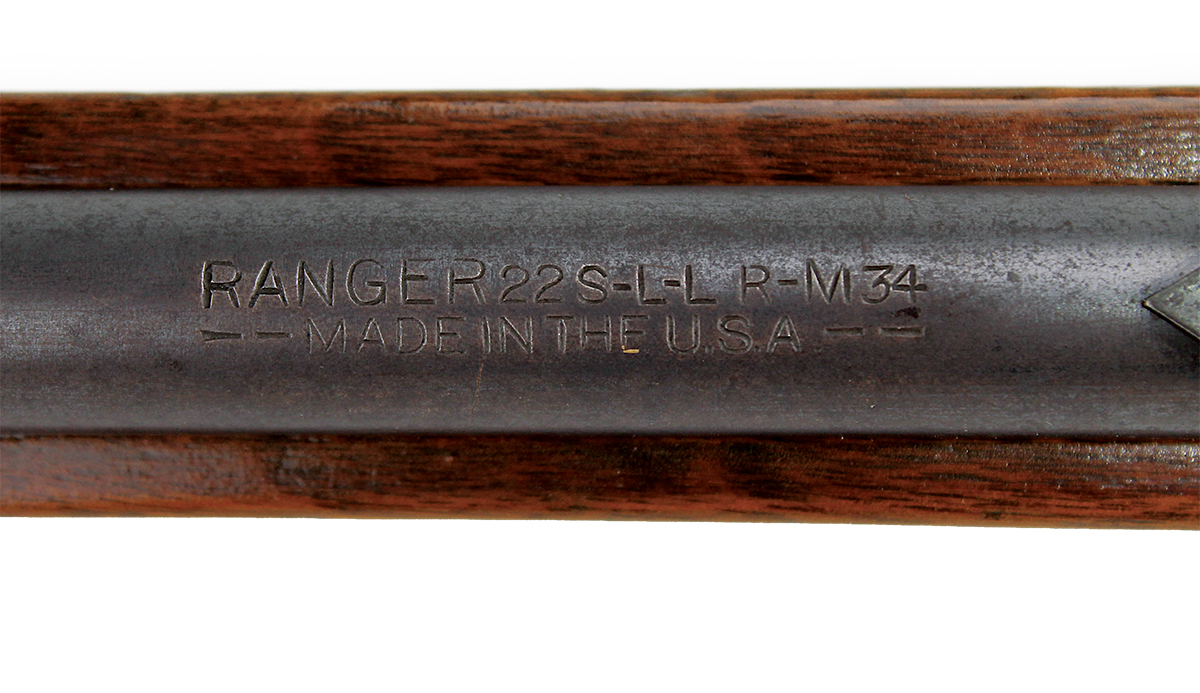Fouling Shots
Free Guns and Darn Well Worth It
column By: Art Merrill | November, 24

One of those gypsies may be the Cobra CA-380 pistol given to me by the mechanic who works on my wife’s SUV. “Here,” he said, pushing the pistol into my hands. “It jams, I can’t get it to work and I’m tired of it. Maybe you can fix it.” If you have any experience with the inexpensive Cobra, perhaps you’ll agree that it is not exactly a premier handgun, possessing an unkind, if not undeserved reputation for cheapness. Still, with an identical “parts gun” on hand, I thought I might resolve the problem and make a couple bucks on an honest resale. Nope – no amount of troubleshooting and parts swapping made it work. That gypsy moves on when I find another optimistic sucker who can’t refuse a free gun accompanied with, “Maybe you can fix it.”

After careful examination, I gave him the bad news, but in an attempt at kindness, I tempered it with the suggestion that the Lefaucheux might make an interesting paperweight if he could find someone to weld it back together. Of course, he was disappointed, but he smiled and said, “Thank you for your time – here,” and handed me the two-piece Lefaucheux. I use it as a paperweight, but the wife hides it when we have visitors.
A gunsmith friend gave me a broken, filthy Savage Model 340B bolt-action 30-30 that looked pretty much like a pump handle attached to a piece of kindling. “Let’s see what you can do with that,” he said. Really? A bolt-action 30-30? Gee – thanks. This unwanted rifle, however, is a success story. Perhaps you saw it in Rifle’s Varmint Rifles and Cartridges (Spring 2022) magazine and I intend to spotlight it in a future article.
Earlier this year, a gentleman brought in two rifles he had inherited and, not being a gun guy, simply didn’t want. “Just make me an offer,” he said, leaning forward a bit and looking me eagerly in the eye. I offered him a fair price on the minty SKS Paratrooper missing its folding bayonet, but told him I wasn’t interested in the nondescript single-shot, bolt-action 22 with “RANGER” stamped on the rust-speckled barrel, the initials “WDB” carved into the forend and its general aura of worn-out cheapness. But when he left with cash in hand for the SKS, he left the 22 on the counter and said, “You can keep it.”
As it turns out, this unwanted rifle has actually rendered some entertainment in examination, researching its history and, of course, in shooting it because it’s a rifle and I’m a rifleman. While there are a number of rifles with the RANGER stamp, this one appears to be a “promotional” Marlin Model 65, probably manufactured for Sears, Roebuck & Co. during 1935-1937 to bear the Ranger brand name (indeed, the would-be seller claimed his uncle had purchased the rifle in the 1930s, carved his initials in it and kept it until his death). It is identical to the Marlin Model 65 but for the lack of a safety and that it requires manual cocking by pulling rearward on the bolt cocking piece. Such differences are not unexpected in a promotional rifle contracted for rebranding. Regardless, and despite its Depression-era lack of sophistication to minimize end-user cost, the rifle is a practical and functional tool as a small game getter at a 1930s basement price. Actually, I reckon I scored the ultimate basement price 90 years later.

Though today we equate single-shot 22s with youth trainers or match rifles, the Ranger is neither. This is an adult-size rifle with a 24-inch barrel and an overall length of 41 inches. Perhaps to compensate for any other perceived shortcomings, the stock forend features a Schnabel tip and finger grooves. Back in the day, the Schnabel was found on fine hunting rifles and finger grooves on military rifles. Finger grooves on civilian rifles back then was a “cool factor” in the way that “tactical” features on a rifle are “cool” today.
A complete disassembly and bath in the ultrasonic cleaner followed by addressing the rust with gun oil, a brass brush and 0000 steel wool showed me what’s what mechanically, and the subsequent successful firing of a 22 blank deemed the Ranger eligible for the range. Because this single-shot action requires chambering the cartridge with the fingers, then manually pulling backward on the cocking knob to cock it after closing the bolt, shooting groups was necessarily a leisurely affair. It turns out that the no-frills, freebie Ranger still possesses excellent small-game accuracy.
I’ve been on the other end of freebie guns, too, having given away rifles that, at the time, I thought had little value. At the time, they did. When Russian Model 91 and Mosin-Nagant Model 91/30 bolt-action rifles first hit the milsurp market here in the early 1990s, I was buying them wholesale for $35 apiece. Milsurp ammunition was, I recall, maybe 10 or 20 cents per round. I bought cheap and clunky Mosin-Nagants and handed out free rifles to friends and family like I was a kazillionaire. Today, as you probably know, the value of the rifles has increased tenfold or more, and today, I have a single Model 91/30 left.
That’s what happens when one has only a distracted awareness of how capitalism works.


